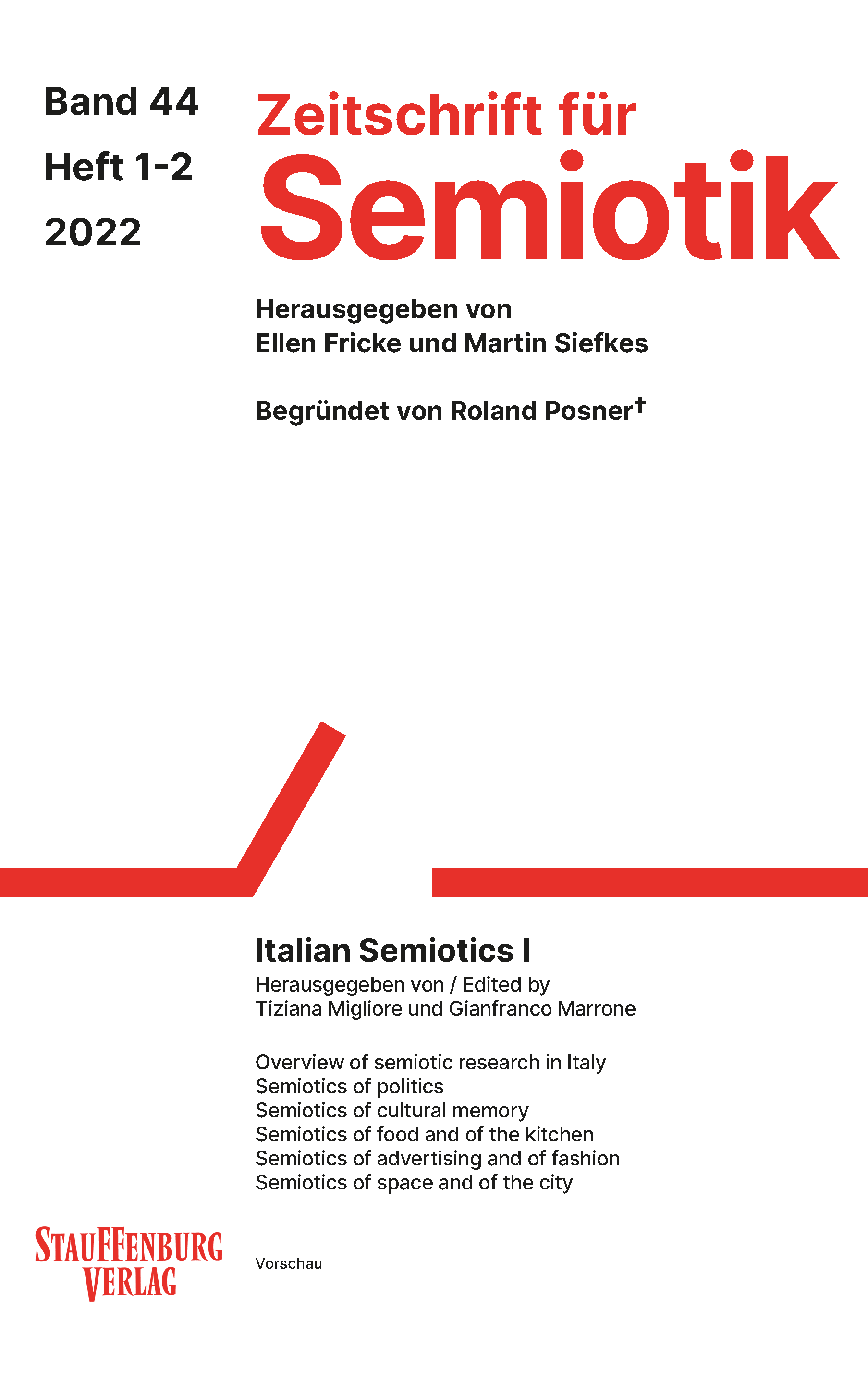Semiotics of Food
DOI:
https://doi.org/10.14464/zsem.v44i1-2.821Keywords:
Semiotics, food, gastronomy, food meaning, identityAbstract
“Good to think with.” The potential of a semiotics of food, as well as its cultural value, is perfectly expressed by this famous statement from Claude Lévi-Strauss. It affirms the importance of food in defining identity on various levels, from entire peoples to individual families or even individuals, and thus emphasises the immediate ritual value that every aspect of nutrition assumes. It is not merely a matter of stating that food inherently conveys something else, that gastronomy becomes the carrier of meanings that go beyond it and have no connection to its nutritional function, but rather of demonstrating its systematic nature. The relationship between food and language, upon careful consideration, can be understood in two different ways: there are discourses that have food as their object, the discourses on food, as well as those of food that employ food as an expressive medium to signify something specific. However, it is not sufficient to claim that bread signifies something in a certain tradition to make it semiotically relevant; one must argue that bread is capable of articulating a broad range of concepts. This possibility is what the semiotics of food investigates.
Downloads
Published
Issue
Section
License
Copyright (c) 2025 Dario Mangano

This work is licensed under a Creative Commons Attribution 4.0 International License.
Copyright for articles published in this journal is retained by the authors. The content is published under a Creative Commons Licence Attribution 4.0 International (CC BY 4.0). This permits use, distribution, and reproduction in any medium, provided the original work is properly cited, and is otherwise in compliance with the licence.


